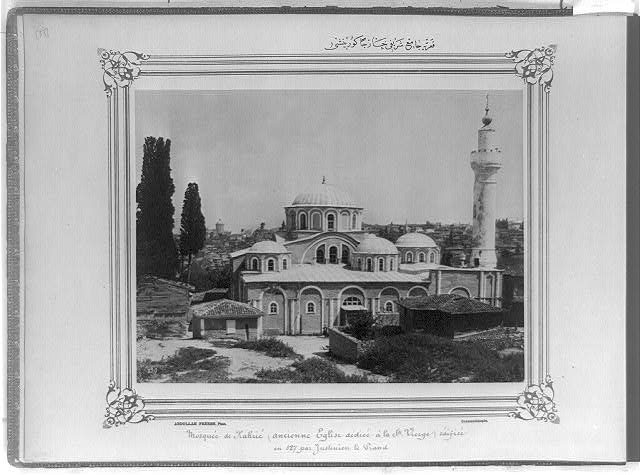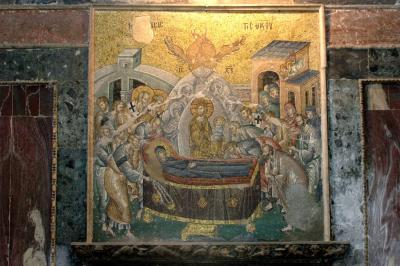Chora Monastery
The finest examples of Byzantine mosaics that have remained to the present day are the ones found in the Chora Monastery. This building was used for a time as a mosque and was known as the Kariye Camisi. Following the Second World War the building was repaired and restored and opened as a museum. The walls and the domes of this structure are ornamented with mosaics. These pictures are very alive and they portray the lives of Jesus and Mary, the death of Mary. The fresco of the Last Judgement belonging to this church is on exhibit at the Hagia Sophia.

Many other examples of Byzantine architecture are still being used today. Some of these structures are the “Little” Hagia Sophia, The church of St. Irene, The Mescit of Sheik Suleyman, the Mescit of Sancaktar, the Pantocreator Monastery (Zeyrek Camii), the Monastery of Akaleptos (Kalanderhane Camii), the church of St. Tekla Atik (Mustafapasa Camii), The church of St. Theodosia (Gül Camii), The church of the Myrelaion Monastery (Bodrum Camii) and the church of the Lips Monastery (Fenari Isa Camii). The church of St. Euphemia the Martyr was built in the fifth century AD and is a circular building standing in Sultanahmet Square. The most unique feature of this building is its very interesting frescos. One of these portrays the torture and death of Euphemia from Kadikoy who is believed to have been killed because of her religious beliefs.
Most of the churches and monasteries of the Byzantine period were converted to mosques and this fact has actually helped these structure to survive for 1200-1500 years as they were thus kept in a state of repair.

Death of the Virgin Mary
Photo By Dick Osseman
